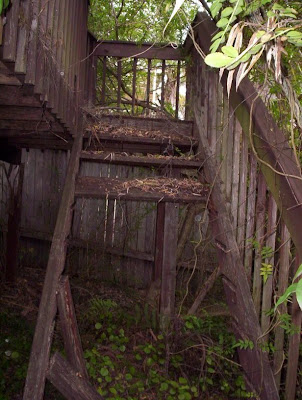A Standard Pre Purchase Building Inspection Report attempts to assist in judging a building according to its age and level of maintenance, the report doesn’t encompass a view of the building from every aspect, such as that from a geotechnical or engineering point of view. A Standard Pre Purchase Building Inspection Report should be seen as an attempt to identity significant defects visible at the time of inspection.
The Standard Building Inspection Report you order doesn’t comment on minor defects or imperfections (the scratch on the kitchen bench for example) if you require such information, a Special Purpose Report should be commissioned. Most commonly these are commissioned as ‘Completion Inspection Reports’ and ‘Tenancy Inspections’. Inspect It >> can perform both.
Also, when ordering a report, remember with a Standard Building Inspection Report the builder will not comment on the geotechnical aspects (foundation integrity or soil conditions), engineering (the overall structure), nor can he comment on electrical, plumbing, gas, or motorised appliances. If you would like comments on any of these areas it is best to commission one prior to purchase.
Thursday, September 25, 2008
Monday, September 15, 2008
Thermal Imaging

More and more Pest Inspectors are now selling a pre purchase Pest Inspection Report with the inclusion of thermal imaging. This technology is great, with an ever increasing need for non-invasive access by purchasers, vendors and real estate agents. The imaging provides a view of areas such as wall cavities and high moisture levels and the technology can be used in unison to moisture meters and other dampness indicators.
What you may not know is that when an inspector who uses thermal imaging equipment claims to see ‘potential active termites’, it could be a wide range of defects, further evidence is required to establish the true nature of the hot spot.
Thermal imaging can highlight not only signs of termites, but (and not limited to): poor building practices (which aren’t in most cases known by a Pest Inspector), a plumbing leak, or signs of ants. How the inspector interprets findings all depends on the processes he uses to conduct his inspection alongside his experience.
As well as not pinpointing the reason for the hot spot, thermal imaging does not locate signs of termite damage. This is very important. Choose an inspector which does not base his inspections on thermal imaging alone, but makes use of and who is experienced in, a range of other techniques to provide you with the most accurate inspection. Spotting potential active termites is an advantage, but an advantage which ‘most’ pest inspectors should be able to spot in a traditional inspection.
Wednesday, September 3, 2008
Termites - 1 in every 4 homes

Termites are the cause of the greatest economic loss of timber in service in Australia. Independent data compiled by State Forests show 1 in every 4 homes are attacked by termites at some stage in their life. Australia’s subterranean termite species (white ants) are the most destructive timber pests in the world.
The most destructive species live in large underground nests containing several hundred thousand timber-destroying insects. The problem arises when a nest matures near your home which provides a natural shelter and food source for termites. The gallery system of a single termite colony may exploit food sources over as much as one hectare, with individual galleries extending up to 50 meters or more to enter your home.
Concrete slabs do not act as a barrier as termites can penetrate cracks through the slab or over the slab edge. Once in contact with the timber they can excavate it often leaving only a thin veneer on the outside. If left undiscovered the pecies can cause many thousands of dollars damage and can prove costly to treat.
Labels:
cost of termite damage,
termite,
termite damage
Tuesday, September 2, 2008
Monday, September 1, 2008
Termites and concrete slabs

Homes constructed on concrete slabs pose problems with respect to detecting termite attack. If the edge of the slab is concealed by garden beds, lawns, paths, pavers or any other obstructions, then it is possible for termites to gain concealed entry to the property. They can then cause extensive damage to concealed framing timbers before being detected.
Even the most experienced inspector may be unable to detect their presence due to concealment by wall linings or other obstructions. Only when the termite attack timbers in the roof void, which may be concealed by insulation, or some other visible timbers, can their presence be detected. Where termite damage is located in the roof, it should be expected that concealed framing timbers (if present) may be extensively damaged.
With a concrete slab home (part or full) it is imperative that you expose the edge of the slab. This may involve the excavation of soil or the complete removal of garden beds, paths, pavers or other features which concealed the slab edge. It is recommended that at least 75mm of the slab edge above ground level remain exposed at all times to facilitate the detection of termite entry. Weep holes must always be kept free of obstructions at all times.
Subscribe to:
Posts (Atom)



